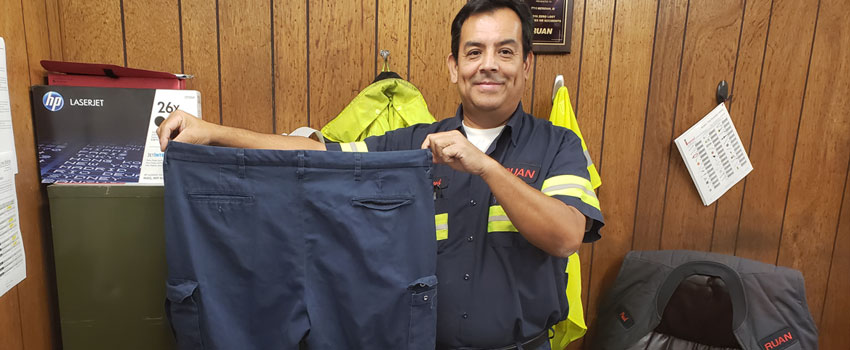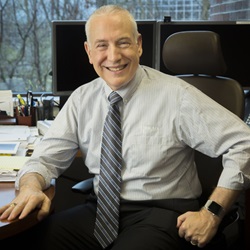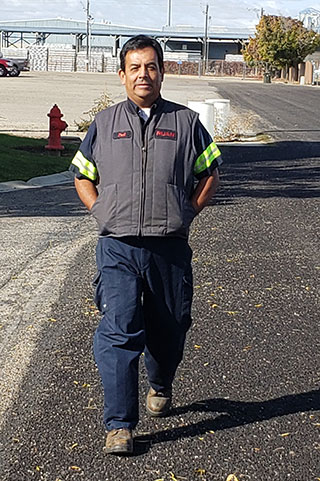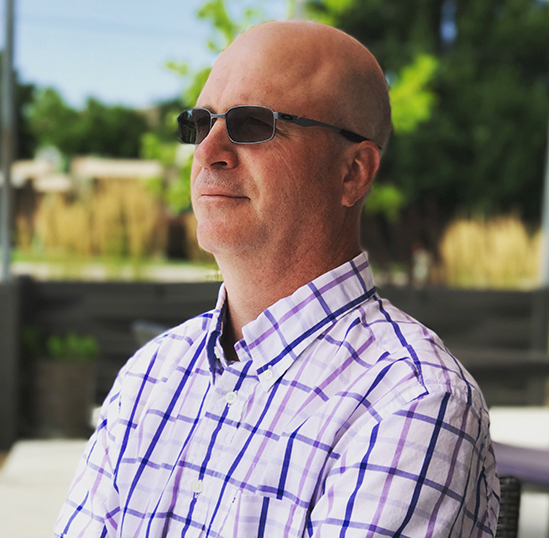Dr. Pate’s Prescription for Change
St. Luke’s Men’s Health makes a new game plan – and a new life – possible for one health holdout


Men use less care, see their primary care physician less often and are less likely to seek preventive health care services than women. That means men are more likely to go for long periods with hypertension, diabetes and other conditions undetected.
These are among the reasons that we created a men’s health program; here to share one of our many success stories is Chris Langrill, a writer for St. Luke’s Communications and Marketing department.
- David C. Pate, M.D., J.D.
Looking back, Paul Garcia knows it sounds crazy. In fact, he says it was crazy.
The 51-year-old diesel mechanic made a doctor’s appointment in January. It was the first time he’d seen a doctor in more than two decades.
“I hadn’t been to a doctor since I was 27, when I broke my nose at work,” Garcia said. “I’d been relatively healthy for most of those years.”
More recently, Garcia knew his health was taking a turn for the worse.
“There was sluggishness, tiredness,” Garcia said. “I just felt like I was carrying another man on my back. There was constant urination and I was constantly craving sweets.”
He made an appointment at St. Luke’s Men’s Health Clinic in Meridian. He ended up seeing Tate Hansen, a physician’s assistant who has been working at the clinic for the past three years.
“That day, I remember he weighed me and I was 278 pounds,” Garcia said. “I found out I was diabetic. My sugar the day he tested me was at 398; a normal person is between 80 and 120. I thought to myself, ‘Wow!’ I walked out of there embarrassed, ashamed.”
Before he left the clinic, Garcia and Hansen had a discussion. Hansen pulled no punches.
“I kind of made that point with him. I told him, ‘Don’t sugarcoat it,’” Garcia said. “And he appreciated that and we kept it real. He made it pretty clear to me that if I kept going the way I was going, I was going to end up in a diabetic coma. It wasn’t good.”
But the talk was good – and productive.
“It’s kind of nice to see patients that actually listen and take what you’re saying to heart,” Hansen said. “When they do that, it can really make a huge difference.”
It did for Garcia.

“I went home and my wife, she just cleared out the pantry, the bread, the sweets,” Garcia said. “We essentially threw everything away and started a new way of eating.”
Garcia is no longer drinking large quantities of soda. Instead, he drinks a lot of water.
“Tate Hansen says water is your friend,” Garcia said.
Instead of daily visits to local fast-food restaurants, his wife packs healthy snacks for him to eat at work.
“I eat chicken, fish, a lot of eggs … lean protein,” he said, pulling rice cakes and nuts out of his drawer at work. “If I want a burger, I’ll use some romaine lettuce to wrap it. And olive oil, I’ve learned it’s the best.”
As for exercise, he checks his steps on his phone, and makes sure to take short breaks at work and to walk around the shop where he works and the surrounding neighborhood.
“I fish a lot, I walk with my grandson,” he said. “We’ll walk all around Lake Lowell.”
Diet and exercise have made him a new man.
“I’m down to 218 pounds now,” said the 5-foot-11 Garcia, who has a target weight of 189. “I’m now off the insulin … My blood sugar is down to 84, 87 in the morning, and in the evening, it’s in the low 90s.”
Garcia took that brutally honest talk seriously, but Hansen said that’s not always the case.
“I’ve had other patients like him who have done well, but we also get patients who don’t, and they continue to struggle,” he said. “That’s probably even more common.”
Hansen prefers the success stories.
“They feel better and they’re happier,” he said. “You get more satisfaction knowing that you’ve helped somebody and made a difference.
“We’d definitely like to see that more frequently.”
Garcia is a big believer in the game plan Hansen and the Men’s Health team provide.
“It’s the best thing that’s happened to me,” he said. “I couldn’t have done it without the doctors and nurses.”
Lessons learned
Paul Garcia looks back and can see how he allowed his health to decline. He’s now a male model – for how to make lifestyle changes for a happier, healthier life, that is.
Here are some lessons Garcia learned along the way.
- See a doctor regularly. Garcia knows he would have been more aware of his declining health had he gotten into the habit of routine checkups.
- Drink water, not soda.
- Limit sweets.
- Get help from family members and those close to you. Garcia goes for regular walks with a co-worker. His wife was instrumental in changes to his diet. “Had it not been for my wife helping me I couldn’t have done it,” he said. “Without her, there would be no me.”
- Set goals. Garcia said he didn’t sit down and write down his goals, but looking back, he knows that he had a few very specific aims in mind. “I kind of live it day by day,” he said. “But I knew I wanted to stop being on insulin.” He hopes to continue losing weight, with a goal of getting down to 189 pounds.
- Embrace the changes. “I feel a lot better now, and I don’t feel like I look 51,” Garcia said. “It’s really amazing, because the path I was going down was a dirt path.”
About The Author

Chris Langrill is a writer and copy editor for the St. Luke’s Communications and Marketing department.


